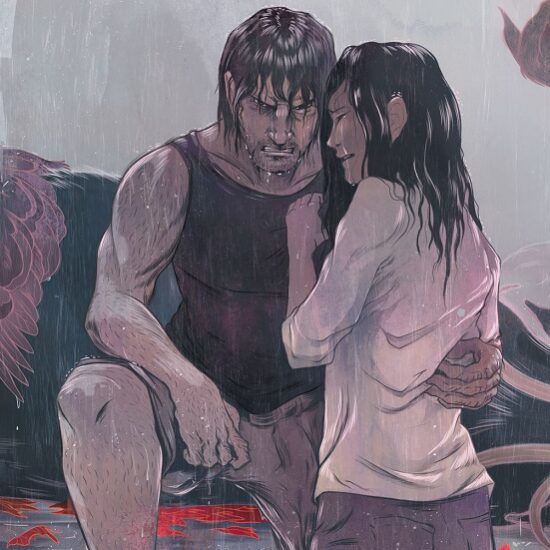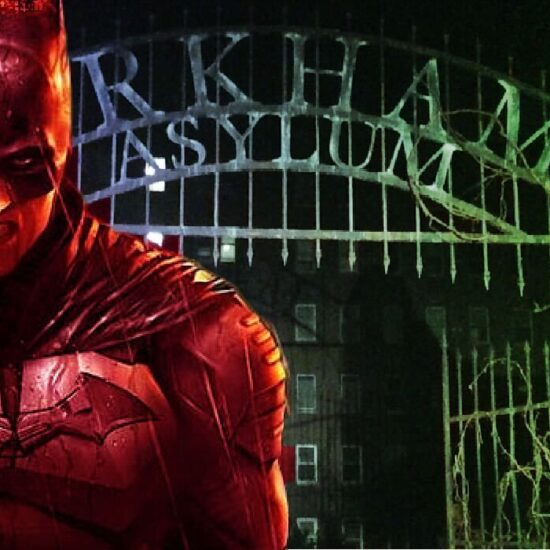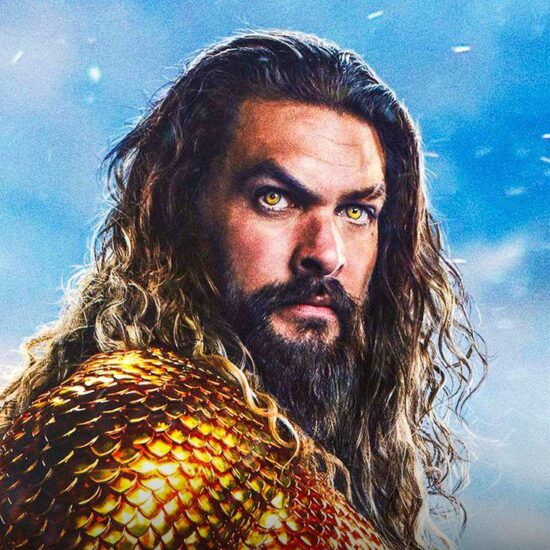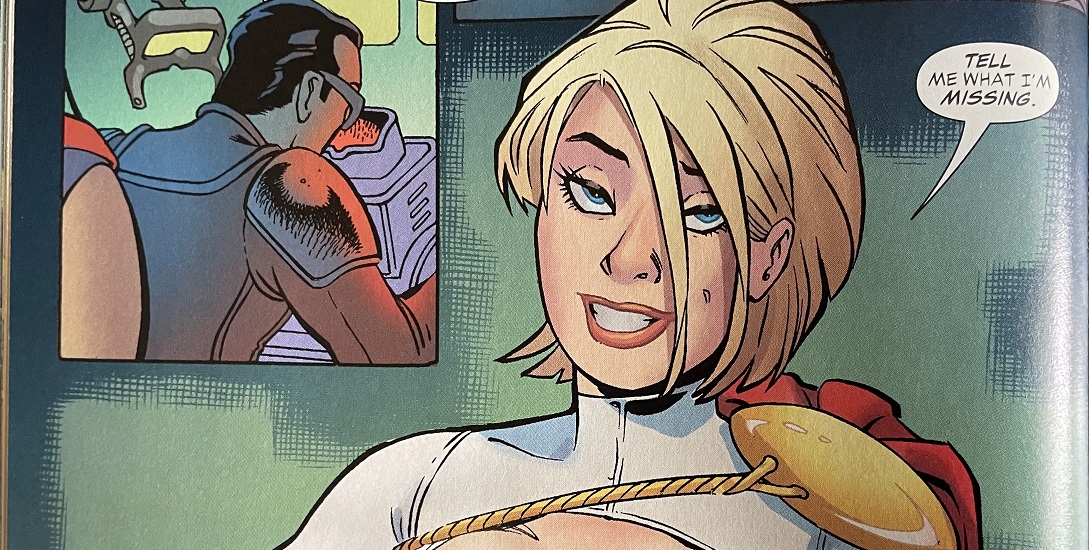
51
Retro Review: Power Girl TPB (2006)
[Editor’s Note: This review may contain spoilers]
Writers: Geoff Johns, Paul Levitz, Paul Kupperberg
Art: Amanda Conner, Joe Staton, Mary Wilshire, Peter Snejbjerg, Patrick Gleason, Jimmy Palmioti, Dick Giordano, Joe Orlando, Christian Alamay
Colors: Paul Mounts, Adrienne Roy, Jerry Serpe, Carl Gafford, John Kalisz
Letters: Rob Leigh, Ben Oda, Shelly Leferman, Albert T. DeGuzman, Ken Lopez
Reviewed by: Matthew B. Lloyd
Summary
Who is Power Girl? Is she Superman’s cousin from Earth-Two? Is she the granddaughter of Arion, Lord of Atlantis? Is she all of them or none of them? It’s the definitive history of Karen Starr, Power Girl.
Positives
Some characters have simple histories and status quo’s and others have more complex stories. After Crisis on Infinite Earths, DC Comics found it necessary to come up some retroactive continuity for certain characters in order for them to make sense in the new unified DC Universe- worlds lived, worlds died and there was only a single universe that survived. Power Girl was one of those characters. With the elimination of Earth-Two from continuity, she could no longer be the cousin of a Superman who had never existed. This Power Girl trade paperback collects the stories that not only provide her original origin story from Showcase #97-99 and her retconned post-Crisis Atlantean origin, but most importantly the story from JSA: Classified #1-4 that returned Kara Zor-L to her roots. Not only does it make sense of Power Girl’s history, but it also sets the stage for her future adventures in her first and only ongoing solo series which would launch after Infinite Crisis.
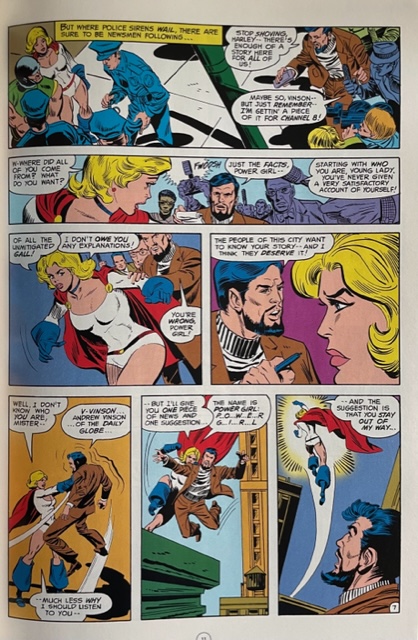
These stories give the reader the full picture of Power Girl. Not only do we get the narrative, but we also get the characterization. If the reader doesn’t know what Power Girl is like it’s all in this collection. From the first story that is reprinted from Showcase #97, it’s clear that Kara Zor-L is a brash, independent and confident young woman. Right out of the gate she is unwilling to let reporter Andrew Vinson have any amount of control over her story. This continues through the reprinted stories and excerpts. Even in her Atlantean origin from Secret Origins #11 (1987) when she is questioning her origins she feel like the same character. The story itself explains why she believes she’s a Kryptonian from an alternate universe, and also depicts her attitude aligned with her established characterization.
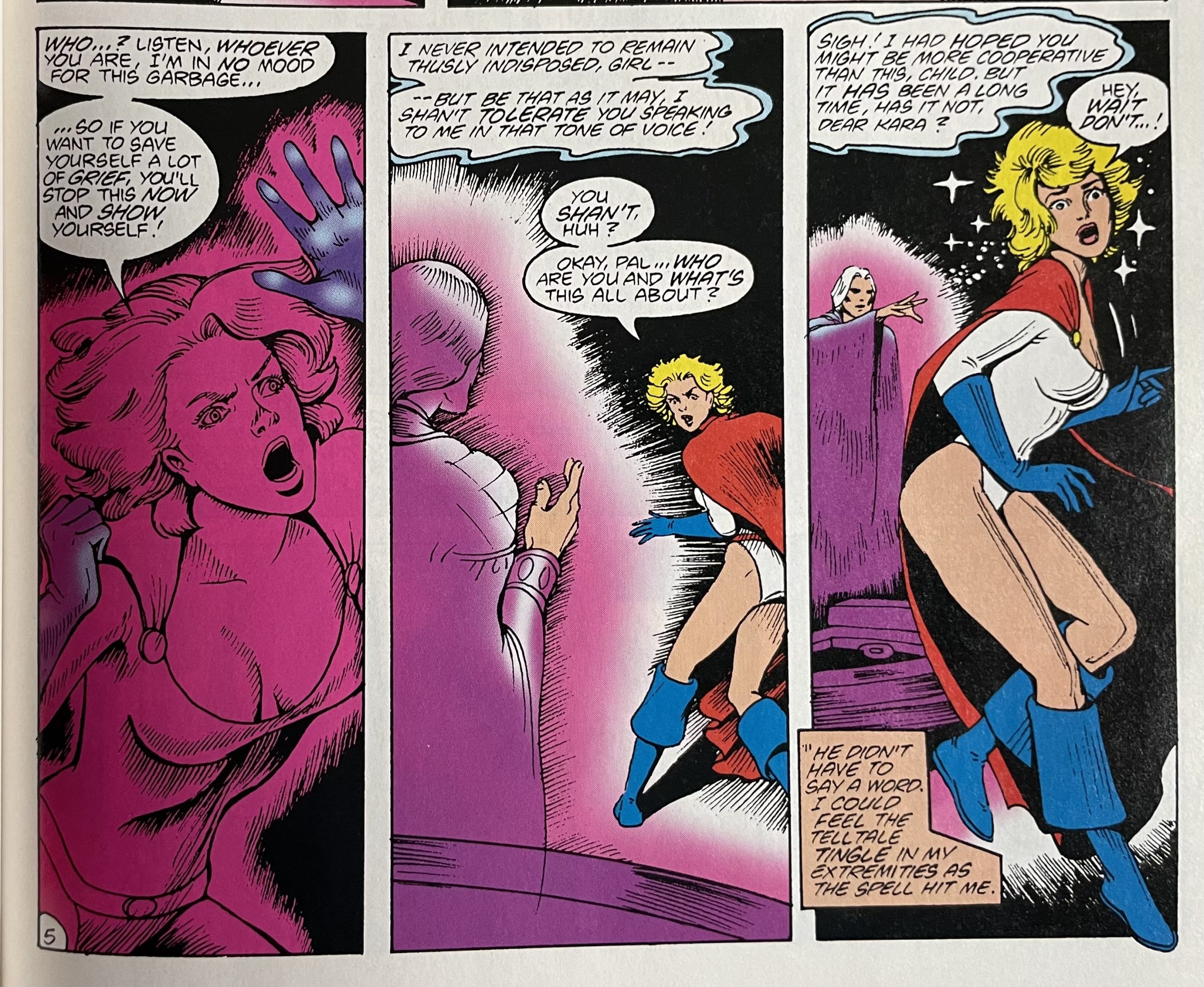
Positives Cont’d
Before getting to the JSA: Classified reprints, the Power Girl TPB utilizes a few pages from JSA which set up the problems that Kara’s been having with her powers. Even these few pages give the reader the confident self-assured character. Geoff Johns and Amanda Conner bring it all together as Kara’s true origins are revealed in a story that reconciles her now erroneous Atlantean origin. Along the way, the Psycho-Pirate torments Power Girl with multiple incorrect origins for her. It’s a fun diversion as Johns draws on characters from DC’s larger continuity. Ultimately, she lands with her mind intact, even if she has questions about her place. But, she does acknowledge that the JSA has been like a family to her, and earlier in the story she recalls how happy she was on Earth-Two. (I was happy on Earth-Two also!).

The three main artists in Power Girl TPB all give the reader a sense of how the character’s look has developed over the years. While she had some very different looks in her days with Justice League International, over the years she keeps coming back to something based on her original and now classic costume which debuted along with her in All-Star Comics #58. This collection proves that classic is best for both her history and costume. While Joe Staton and Mary Wilshire provide great work on the PG of their respective eras, Amanda Conner’s work is the artistic standout of the collection.
This of course leads to a possibly controversial discussion about her appearance. Of course, I am referring to her bust size. What started out as a visual gripe by Wally Wood about how he was being treated has become one of the most recognizable and talked about aspects of the character. Is she overly sexualized? As she once said said she’s “just a healthy woman?” While this aspect isn’t addressed in the reprints from the ’70’s or ’80’s, by the time JSA: Classified #1 came out in 2005, it had become an issue. The stories acknowledge it by allowing Power Girl to embrace her physical appearance. She’s aware of how she looks, and she’s ok with it. She’s aware of how she’s perceived by others both positively and negatively. She’s supremely confident.

When first introduced, she was young, blond and buxom- attributes associated with unwarranted stereotypes in a male dominated medium by both creators of the content and the characters in the comics. Her characterization was designed to contrast against these biases as well as the attitudes of her own JSA teammates. She almost has to be busty and blonde for her to work. It’s visual hyperbole. It’s a case of subverting expectations that isn’t clichéd and works because deep down we know that the stereotypes are inaccurate. It’s the old “don’t judge a book by it’s cover.” She looks how she looks, and she should be treated with dignity and respect. It’s even possible to flip it the other way in terms of body shaming. People look how they look and it’s not a reason for derision or disrespect.
Negatives
As a fan of Power Girl since the late ’70’s it’s hard to find a fault with this collection.
Verdict
If you’re a fan of Power Girl, then Power Girl TPB (2006) is the place to start. It’s also the perfect starting point for the uninitiated. Power Girl is one of the first overtly feminist characters created in the midst of the Women’s Liberation Movement of the ’70’s. Her confidence and sense of self are integral to understanding the character. She’s stood up to Superman, the JSA and anyone else who would seem to minimize her or hold her back. Amanda Conner proves with her work included from JSA: Classified that she is THE iconic Power Girl artist of the 21st Century and arguably all-time.











